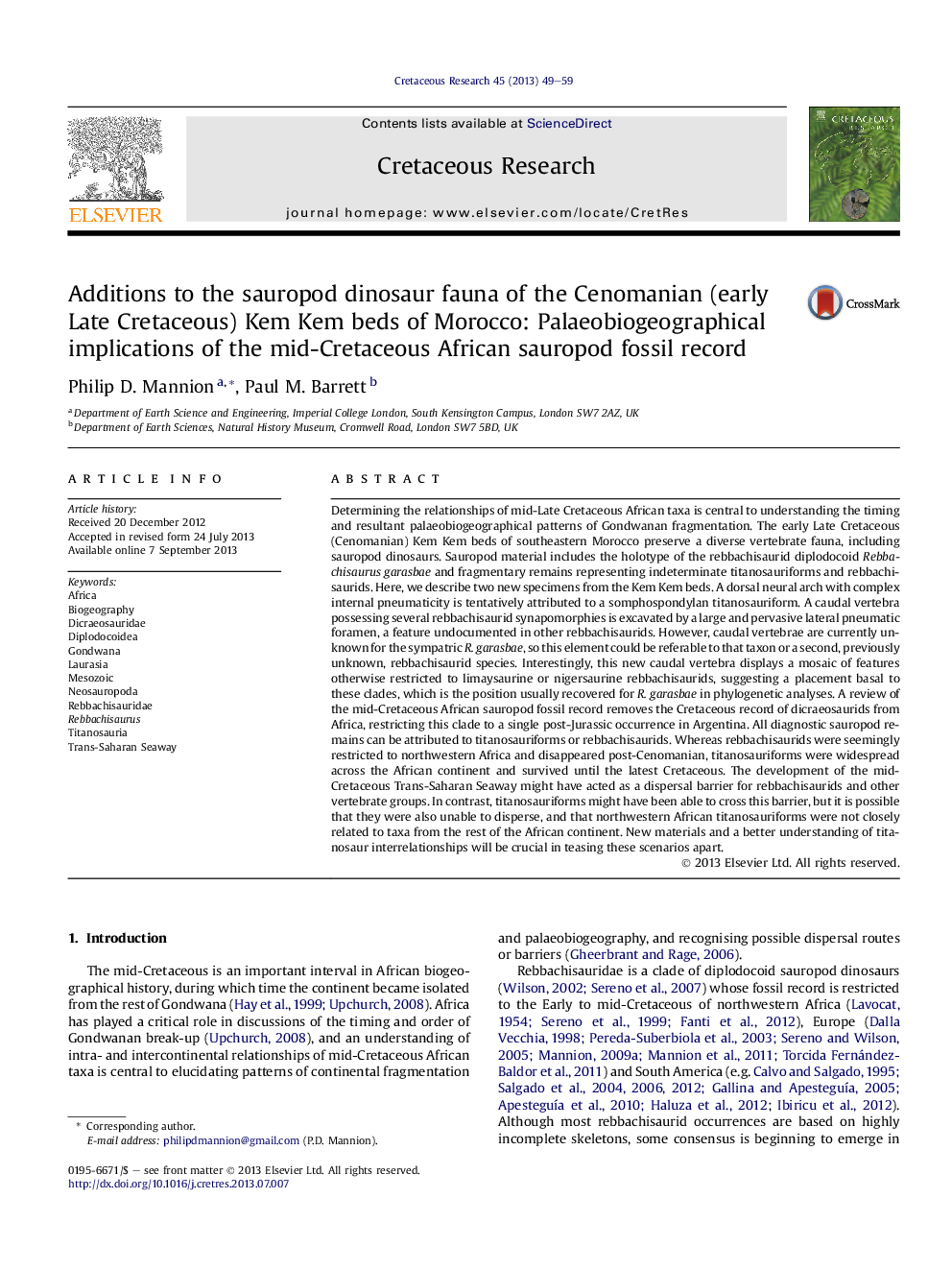| Article ID | Journal | Published Year | Pages | File Type |
|---|---|---|---|---|
| 4747283 | Cretaceous Research | 2013 | 11 Pages |
•We describe new early Late Cretaceous sauropod dinosaur material from the Kem Kem beds of Morocco.•This material comprises a dorsal neural arch of a somphospondylan titanosauriform and a caudal vertebra of a rebbachisaurid.•The caudal vertebra possesses a large and pervasive lateral pneumatic foramen, a feature undocumented in other rebbachisaurids.•All diagnostic mid-Late Cretaceous African sauropod remains can be attributed to titanosauriforms or rebbachisaurids.•Establishment of the Trans-Saharan Seaway may have restricted rebbachisaurids to northwest Africa.
Determining the relationships of mid-Late Cretaceous African taxa is central to understanding the timing and resultant palaeobiogeographical patterns of Gondwanan fragmentation. The early Late Cretaceous (Cenomanian) Kem Kem beds of southeastern Morocco preserve a diverse vertebrate fauna, including sauropod dinosaurs. Sauropod material includes the holotype of the rebbachisaurid diplodocoid Rebbachisaurus garasbae and fragmentary remains representing indeterminate titanosauriforms and rebbachisaurids. Here, we describe two new specimens from the Kem Kem beds. A dorsal neural arch with complex internal pneumaticity is tentatively attributed to a somphospondylan titanosauriform. A caudal vertebra possessing several rebbachisaurid synapomorphies is excavated by a large and pervasive lateral pneumatic foramen, a feature undocumented in other rebbachisaurids. However, caudal vertebrae are currently unknown for the sympatric R. garasbae, so this element could be referable to that taxon or a second, previously unknown, rebbachisaurid species. Interestingly, this new caudal vertebra displays a mosaic of features otherwise restricted to limaysaurine or nigersaurine rebbachisaurids, suggesting a placement basal to these clades, which is the position usually recovered for R. garasbae in phylogenetic analyses. A review of the mid-Cretaceous African sauropod fossil record removes the Cretaceous record of dicraeosaurids from Africa, restricting this clade to a single post-Jurassic occurrence in Argentina. All diagnostic sauropod remains can be attributed to titanosauriforms or rebbachisaurids. Whereas rebbachisaurids were seemingly restricted to northwestern Africa and disappeared post-Cenomanian, titanosauriforms were widespread across the African continent and survived until the latest Cretaceous. The development of the mid-Cretaceous Trans-Saharan Seaway might have acted as a dispersal barrier for rebbachisaurids and other vertebrate groups. In contrast, titanosauriforms might have been able to cross this barrier, but it is possible that they were also unable to disperse, and that northwestern African titanosauriforms were not closely related to taxa from the rest of the African continent. New materials and a better understanding of titanosaur interrelationships will be crucial in teasing these scenarios apart.
